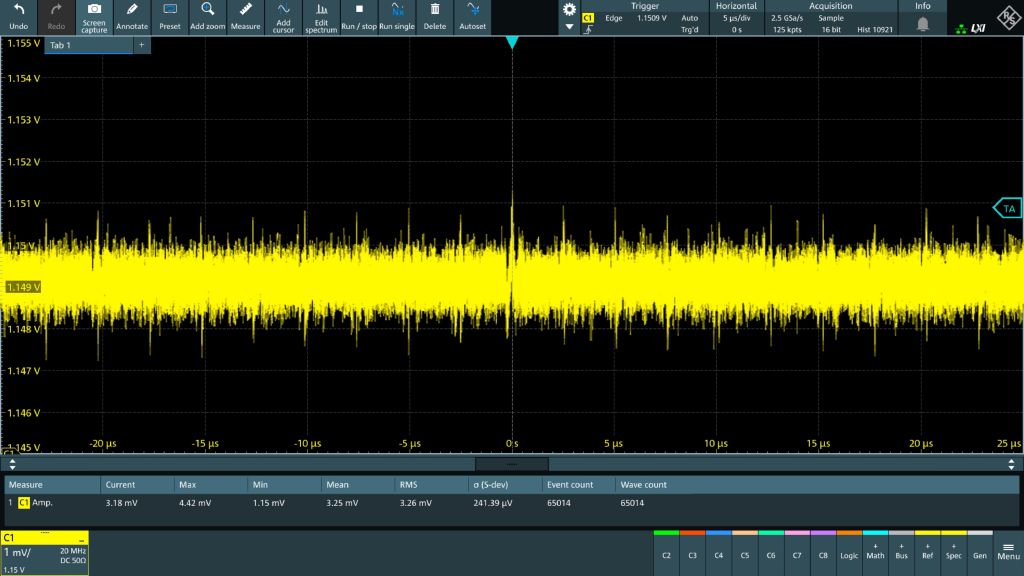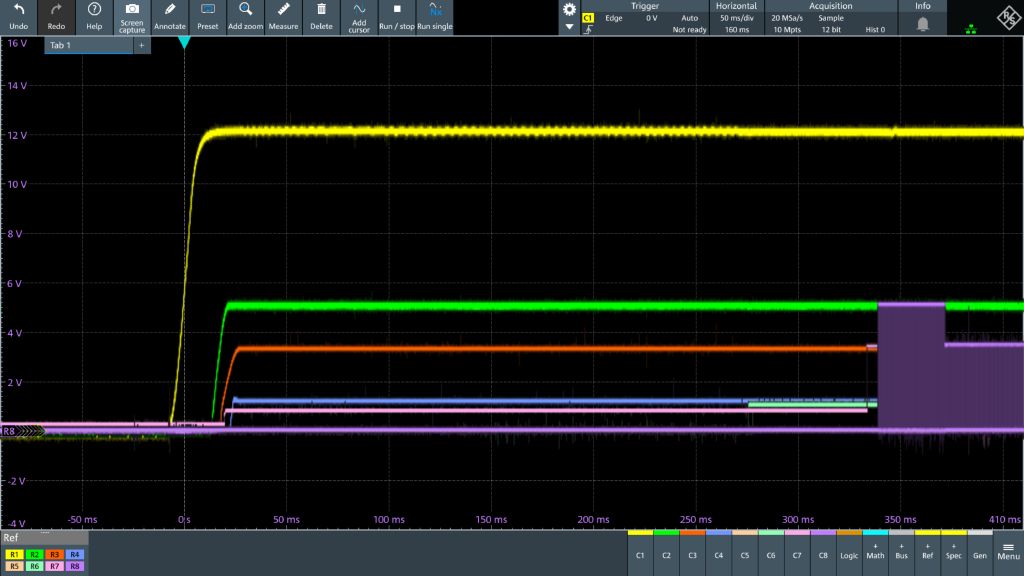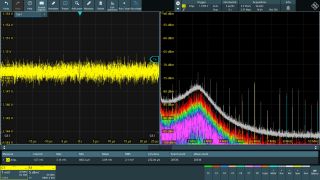Ripple noise measurement considerations
Bandwidth is important when determining power integrity. Measurement systems with higher bandwidths always capture higher noise levels. Identifying the frequency range of interest and selecting the appropriate measurement bandwidths and filter settings on measurement equipment is vital for capturing relevant frequency components while filtering out unwanted noise and harmonics. Power conversion circuits usually have a switching frequency of 1 MHz. So, 20 MHz of bandwidth is enough for a stability analysis of the feedback control loop. There is also a growing trend to characterizing power ripple noise with even higher bandwidth in the gigahertz range. The trend emphasizes the analysis of high frequency load changes. R&S®RT-ZPR power rail probes can provide up to 4 GHz of analysis bandwidth.
When measuring ripple noise, take care to prevent injecting additional noise into the setup. Short and direct connections help minimize interference. Coaxial cables can provide a low inductance setup for any measurements.
Spectral analysis can provide additional insight and help identify the frequency components of power ripples, pinpoint specific noise sources and effectively address them. MXO oscilloscopes have powerful spectral analysis that updates at a rate of 45 000 FFT/s. The fast update rate creates a responsive view of spectral noise for EMI analysis of elusive and sporadic events. Together with near field probes, emission sources can be located and necessary filter designs applied to mitigate power noise issues.












